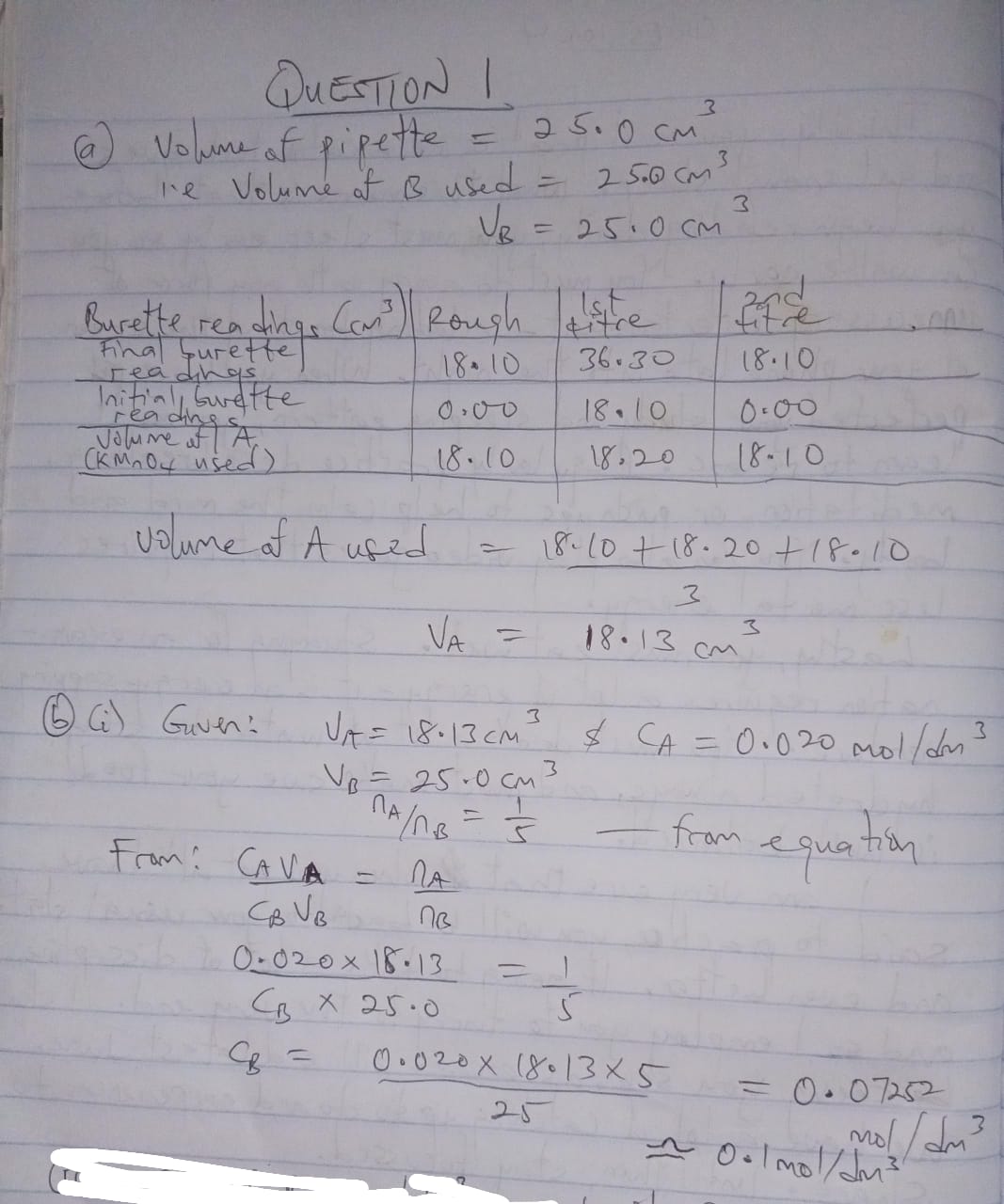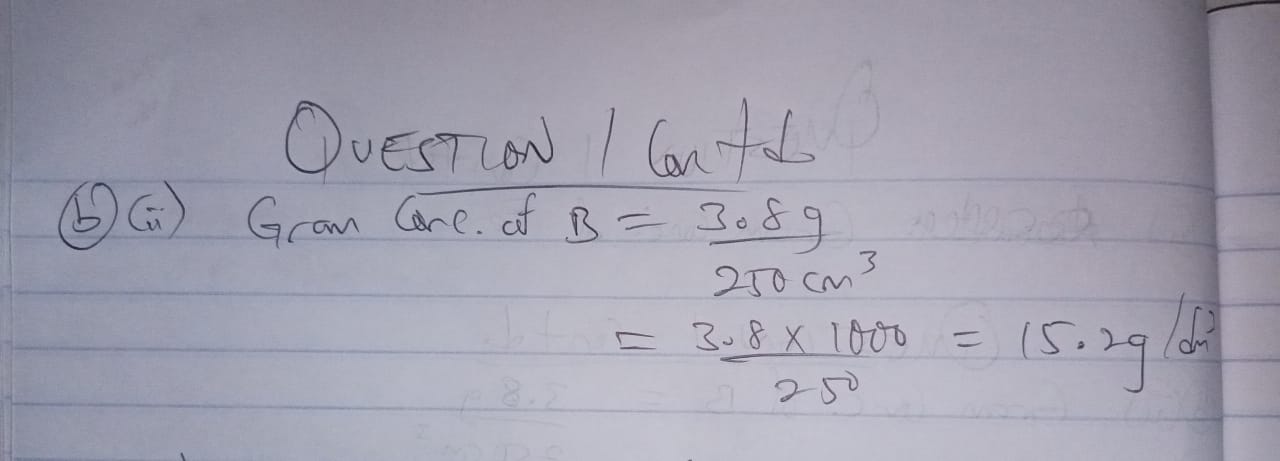
WAEC 2024/2025 Chemistry Practical Answers
NOTICE!!!
For question 1
Use your school’s endpoint and use it wherever you see our endpoint (18.13cm³) …and calculate with it
Replace our 18.13 in 1bi and do the calculation.
If your school wants to use mine, then the chemistry teacher must submit endpoint similar to ours without much difference…eg 18.13, 18.10, 17.90, 18.20, 18.30 etc
TEACHERS REPORT FORM
(2)(a)
A contains 1.58 g of KMno4 per dm³ of solution
(b) B contains 5.5 g of FeSO4 per dm³ of solution
(3)
(i) 18.10 cm³
(ii) 18.20 cm³
(iii) 18.10 cm³
Average: 18.13cm³
(1)



(2a)
When all of C is added to a test tube with about 10cm³ of distilled water and shaken, the mixture is filtered. The residue and the filtrate are obtained.
Observations:
The residue: This will contain the insoluble salt(s) present in C.
The filtrate: This will contain the soluble salt(s) present in C.
(2bi)
Heating about 2cm³ of the filtrate in a boiling tube strongly.
Observations:
If there is effervescence (bubbling), it indicates the presence of a carbonate salt in the filtrate.
The gas evolved is likely carbon dioxide (CO₂).
(2bii)
Adding dilute HCl to half of the residue in a test tube.
Observations:
If there is effervescence (bubbling), it indicates the presence of a carbonate salt in the residue.
The gas evolved is likely carbon dioxide (CO₂).
(2biii)
Adding aqueous NaOH in drops, then in excess, to about 2cm³
Observations:
If a white precipitate forms upon adding NaOH drops, and it dissolves upon excess addition of NaOH, it indicates the presence of a metal hydroxide in the solution.
(2biv)
Adding aqueous ammonia in drops, then in excess, to another 2cm³ of the clear solution from (ii).
Observations:
If a colored precipitate forms upon adding ammonia drops, and it dissolves upon excess ammonia addition, it indicates the presence of a metal hydroxide in the solution.

(3a)
(i)ammonia (NH₃)
(ii)carbon dioxide (CO₂).
(3b)
(i)A graduated pipette
(ii) A burette can be used.
(3c)
A fume cupboard in a laboratory is used to provide ventilation that limits exposure to toxic fumes, vapors, or dust.
(3d)
(i)safety goggles.
(ii)lab coats.
(iii)gloves.

Share This Post: This post can be helpful to your friends or classmates, you can share it using the buttons below!










10 Comments
Will I pay you.
No wahala .
I go message you.
Please i want answer of chemistry practical
Chat Mr Henry on whatsapp to subscribe for legit answers
I was doubting examgreat but now am convinced.
Everybody should subscribe to their answers because they are the best.
Chat Mr Henry on whatsapp 08118460973
is this for 2025
The group link is ontop of the website.
Please i want chemistry practical answer pls help me to send it on message body on this number and send me ur account number also
Chat Mr Henry on whatsapp 08118460973
But i’m not on whatsapp
chat us on facebook, twitter, instagram, threads or tiktok